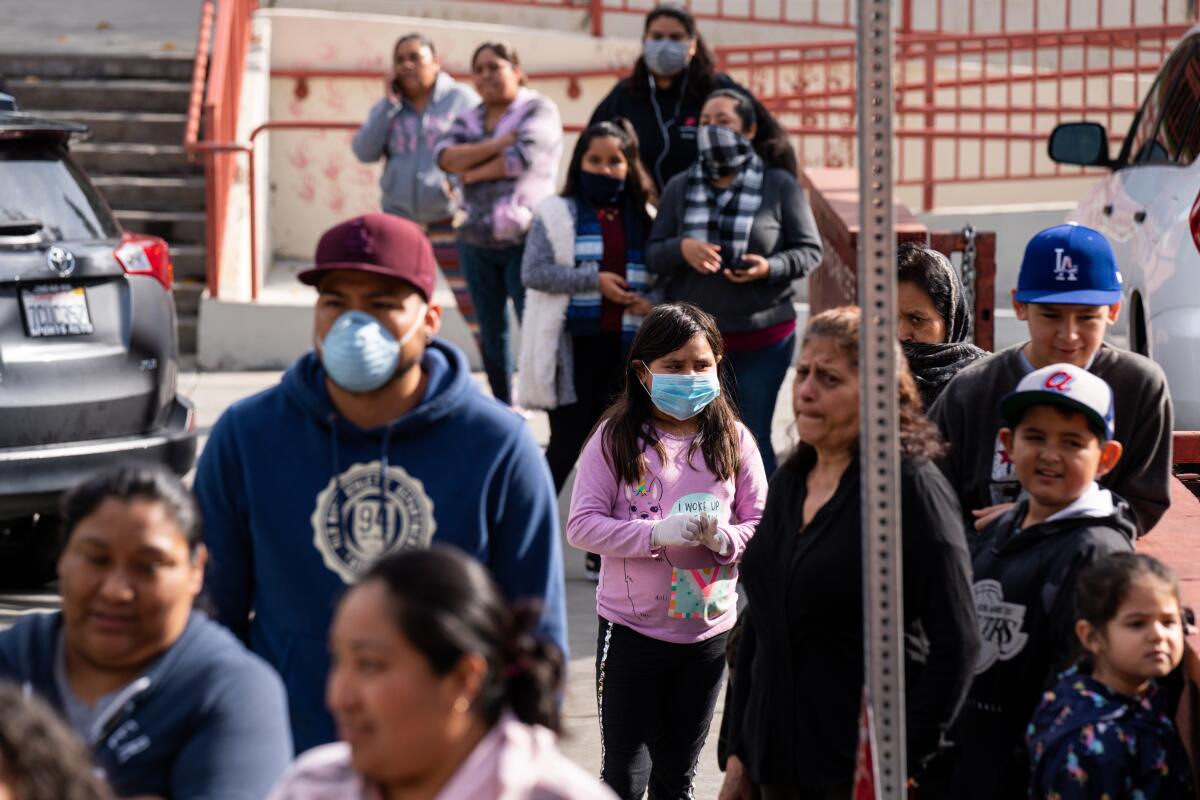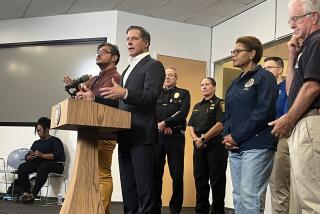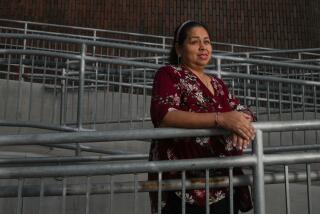No place to study, hunger and inadequate computers hurt Eastside and South L.A. students

Los Angeles families with school-age children in Boyle Heights, South Los Angeles and Watts struggled with access to computers and adequate internet throughout the spring semester while facing job losses and food insecurity, issues that hampered online learning amid the COVID-19 pandemic, a survey has found.
The survey, a collaboration by researchers from USC and the Partnership for Los Angeles Schools, underscores how poverty has exacerbated the toll wrought by the pandemic and how challenging these problems are to overcome. It also suggests that the digital divide is continuing to harm the education of low-income Latino and Black students.
About three-quarters of families surveyed had experienced a loss of income and food insecurity during the pandemic and nearly 30% faced health challenges and housing insecurity. Even so, about 1 in 3 families made investments to support online learning, including paying for internet access.
“This isn’t a trivial amount of money for our families. They’re reporting in the hundreds of dollars,” said Stephen Aguilar, an assistant professor at the USC Rossier School of Education. “Imagine being a family where you lost your job...and now you have to purchase these devices for your students in order for them to get their constitutional right to learn.”
Another key finding showed that more than a third of students didn’t have an appropriate and quiet place at home to study or participate in online learning — a problem that school officials have limited ability to address, unless they bring small groups of high-needs students back to campus, as county guidelines now allow.
L.A. Unified School District officials and other L.A. County school districts have hesitated to take this step over concerns of spreading the coronavirus, although a few school systems are moving quickly to make these opportunities available.
Recognizing this problem with the learning spaces at home, L.A. Unified and donors have worked to provide headphones to students to minimize distractions.
The survey focused on areas served by the Partnership for Los Angeles Schools, which manages 19 L.A. Unified schools enrolling 14,200 children in Boyle Heights, South Los Angeles and Watts. They are among the lowest-income areas in the city and have been hit hard by the pandemic.
In these schools, 89% of students are Latino, 9% are Black, and 96% are members of low-income families. Nearly 1,200 families completed the survey.
Researchers conducted the survey in July, so the findings encompassed the entire spring semester but not the beginning of the current semester.
The findings call into question ongoing announcements from L.A. Unified officials that virtually all students were quickly connected in the spring after campuses shut down in March. At the time of the survey, about 17% of families reported having no internet at home.
In remarks Monday, L.A. schools Supt. Austin Beutner said 98.5% of all students in the district were now connected. A district spokesperson said last week that this meant a student had logged on to the district’s online learning platform at least once since school started on Aug. 18.
Beutner also said attendance numbers were relatively strong — considering the ongoing pandemic. There is an average daily rate of 93.4% this school year compared with 97% last year, according to the district. Attendance accounting this year, however, allows students to be counted as present with minimal daily interaction.
If a teacher receives one email from a student or parent before midnight, for example, that student can then be counted as present for the school day. A turned-in assignment meant to be completed over three days can count as three days of attendance even if a student does not otherwise make contact with a teacher.
This loose attendance accounting is not unique to L.A. Unified; state officials established these rules. The LAUSD, however, has not released additional data that give a clear picture of student engagement.
The survey also highlights several factors that could continue to pose challenges to student engagement even if all students have computers and hot spots. Seventy-five percent of parents and guardians surveyed did not themselves use computers on a regular basis and some 42% of students are relying on siblings when running into problems with technology.
“Every student in California has a constitutional right to a quality education. As long as we are distance learning, that means that access to quality broadband — and resources needed to support student success should also be a right,” said Ryan Smith, chief external officer for the Partnership for Los Angeles Schools. “The conversation has to ... really center on the Black and Latinx families who are struggling on multiple fronts and also being asked to come out of their own pocket to provide more resources so that their students have the opportunity to learn.”
More to Read
Start your day right
Sign up for Essential California for news, features and recommendations from the L.A. Times and beyond in your inbox six days a week.
You may occasionally receive promotional content from the Los Angeles Times.








